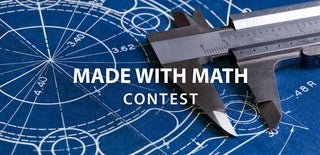Introduction: Print Things Bigger Than Your 3D Printer
If your 3D model is larger than your printer volume, or so complicated you want to chop it into sections, this Instructable will show you how to use the free OpenSCAD program to slice up your model, print, then physically assemble it.
You can build something in OpenSCAD or import a STL format file into OpenSCAD - so it can be used for files you create in other programs or models download from the Internet. Very complex models sometimes crash so there are limits.
OpenSCAD uses constructive solid geometry or CSG to build complex parts from simple shapes like cubes, spheres, and cylinders. The power of CSG is doing math functions like union(), intersection(), and difference() on objects.
Example: you download a STL model of a toy from the Internet. Use OpenSCAD to put it inside a cube and "subtract" the toy shape using the difference() command. It will instantly make the cube into a mold with a cavity that is in the shape of your toy. difference() that mold with another cube covering the left half and you have the left side of a 2-part mold of your original toy. Use intersection() instead of difference() with that left half cube and you now have the right side of your mold. Two cubes and a little CSG math and you have produced a mold for your toy!
Supplies
OpenSCAD is a free open source 3D model program available here:https://openscad.org/
So download and install it on your computer.
Step 1: Slicing
A fume extractor I built had 3D parts that would not fit on my 1 liter volume tiny 3D printer. I could send it out, visit a Maker Shop, or chop it up. I designed the pieces in OpenSCAD and started chopping!
Below, an OpenSCAD file shows cutting a STL model file down to one quarter size with straight walls. The intersection() command is the opposite of the difference() command. It leaves where the model and the 2 colored cubes all coexist (the colors are just to help visualize what is happening).
//
// Import STL, cut into quarter
//
intersection() {
import("intake75.stl");
// for quadrant printing
translate([0,-75,-5]) color("green",0.4) cube([150,150,100]);
translate([-75,0,-5]) color("blue",0.4) cube([150,150,100]);
}
Place the cubes so that the cut lines are right where you want them and the rest of the model is well within the cube boundaries. The cubes are moved -5 on the Z axis so OpenSCAD does not get confused by two objects exactly on the same plane.
Step 2: Pinning
Multi-part prints rely on piece alignment and joint strength. I use flat joints for simplicity. I pin the pieces together with cut sections of 1.75mm filament. The color will match and the filament sections act like dowels in woodworking projects to make very strong joints that line up perfectly.
// variables
rad = 75/2;
d1 = rad+17.5;
d2 = rad-1.5;
h2 = 25;
h3 = 52;
r3 = rad-1.5;
// subtract alignment holes from
difference() {
-> MODEL HERE <-
translate([-6,d1,2.2]) rotate([0,90,0]) cylinder(h=12,d=1.75);
translate([-6,d2,h2]) rotate([0,90,0]) cylinder(h=12,d=1.75);
translate([d1,6,2.2]) rotate([90,0,0]) cylinder(h=12,d=1.75);
translate([d2,6,h2]) rotate([90,0,0]) cylinder(h=12,d=1.75);
translate([-6,r3,h3]) rotate([0,90,0]) cylinder(h=12,d=1.75);
translate([r3,6,h3]) rotate([90,0,0]) cylinder(h=12,d=1.75);
// keeper holes for filter
translate([0,0,diskheight+1.9]) rotate([90,0,135]) cylinder(h=120, d=1.75,center=true);
} // end difference
Getting the pins in the right places on thin sections is a bit fiddly, but the preview in OpenSCAD makes printing it right the first time easy. I chose this as an example of very thin walls just to show what is possible.
Notice that the edge pins are 1.75mm diameter filament, 12mm long. The pins must be rotated with rotate() and moved with translate() to their correct positions. I used variables for some of the repetitive numbers. Comment out the difference() { and } with // in front of them to see the pins like in the first picture.
Step 3: Print
This model has 3 unique parts:
- one quarter that takes a 1/4-20 threaded insert
- one quarter without the insert - printed 3 times
- a screen that is pinned in place with filament "dowels".
Step 4: Assemble
- Print out all of the parts
- Sand the faces that will join lightly with a sanding block - to get them flat
- Cut filament "dowels" for all of the alignment holes that are a bit shorter than the combined hole depth
- Drill out the filament holes so the dowels fit with a light friction fit. I used a #50 drill, drilling at slow speed
- Dry assemble the whole thing to make sure every joint is tight and aligned
- Glue with super glue. I glue the alignment pins in one side then apply glue to one face and hold the joints tight till the glue sets
I run a bead of super glue along each joint after everything is assembled just to make sure it is well glued. It makes a very strong joint.
If you want a very smooth final part with no joints visible, you can use auto body filler on the seams then sand and paint.
This project had 4 3D printed parts- Nozzle, 2 120mm fan adapters, and a window exhaust port. The window exhaust port was 6 pieces glued and pinned as shown at the top of this Instructable.
All of the printed parts are strong and work great!

Participated in the
Made with Math Contest













